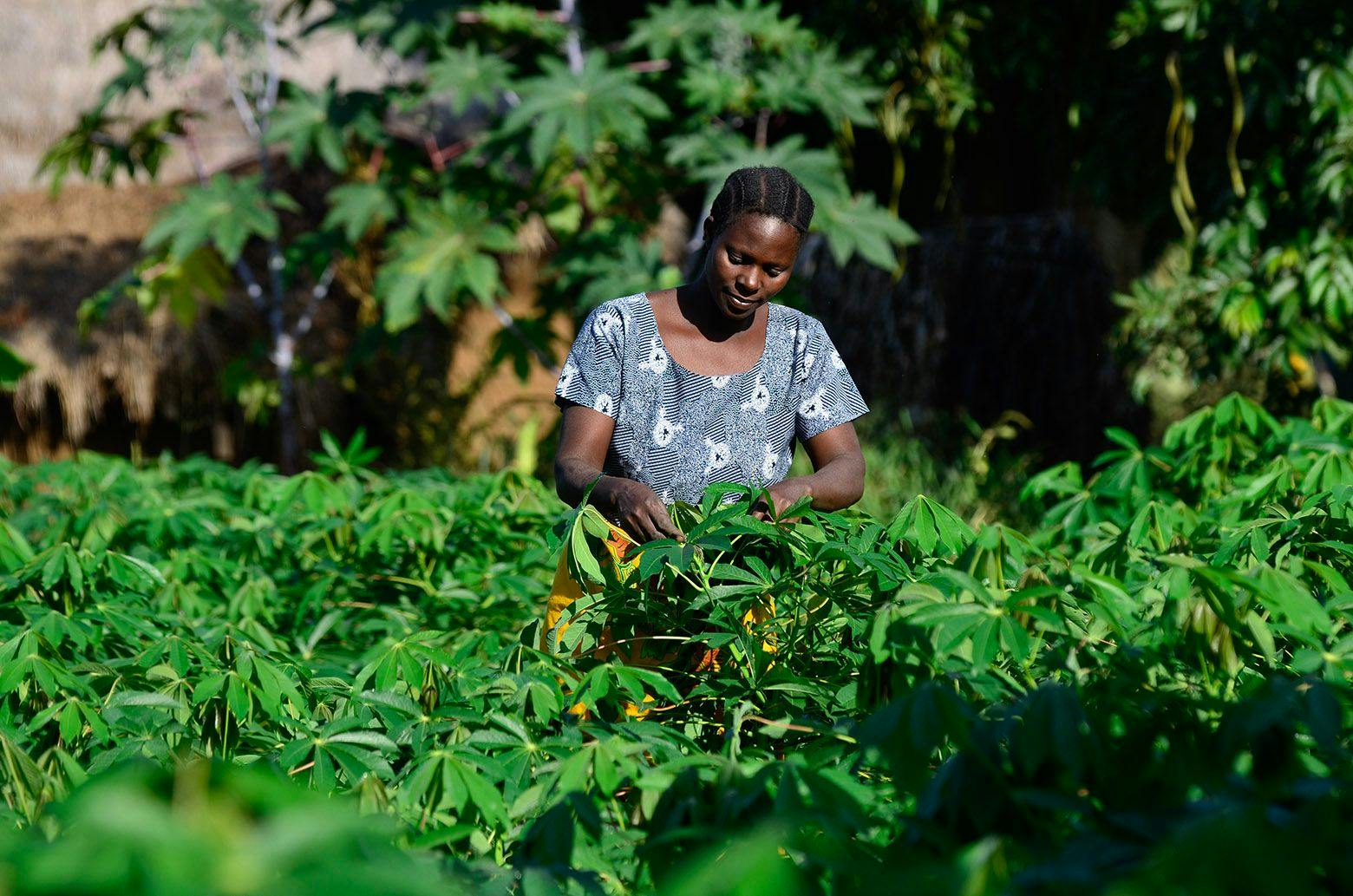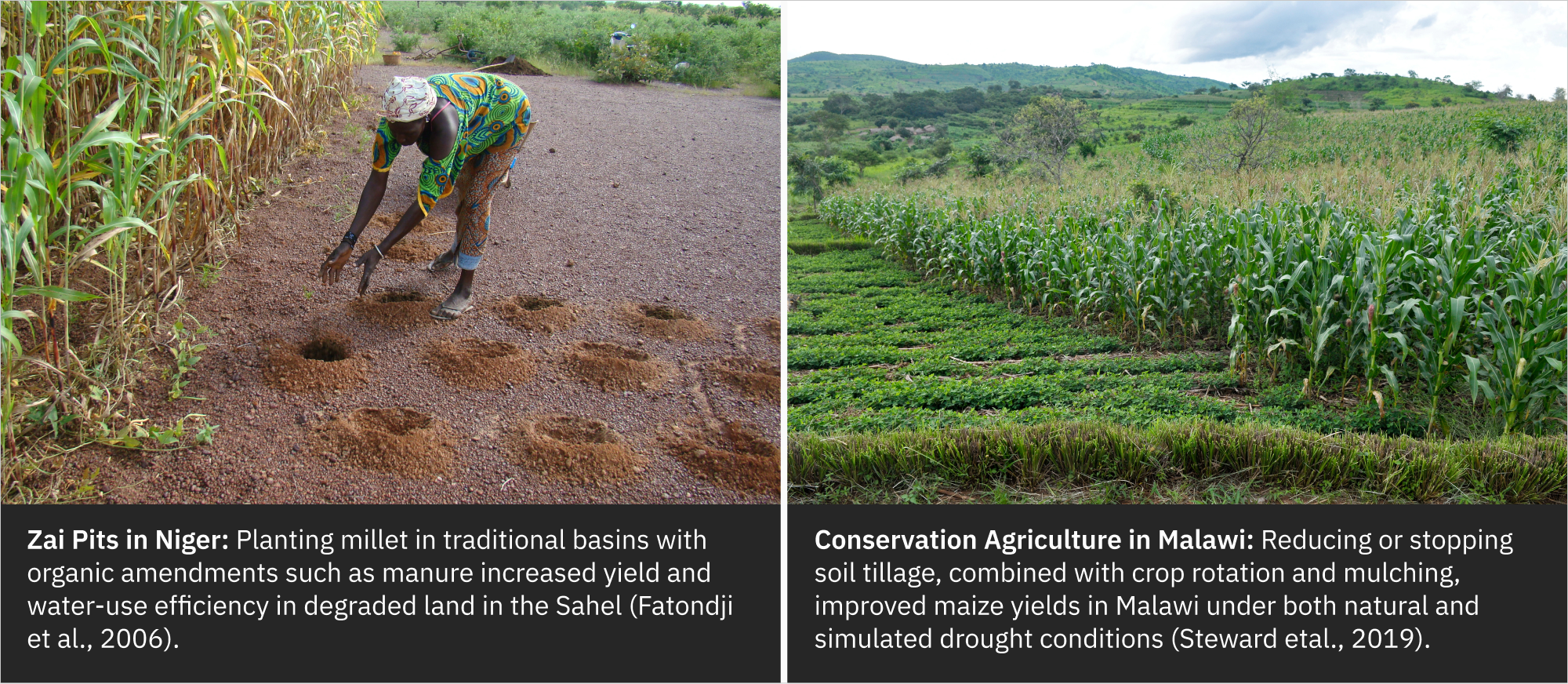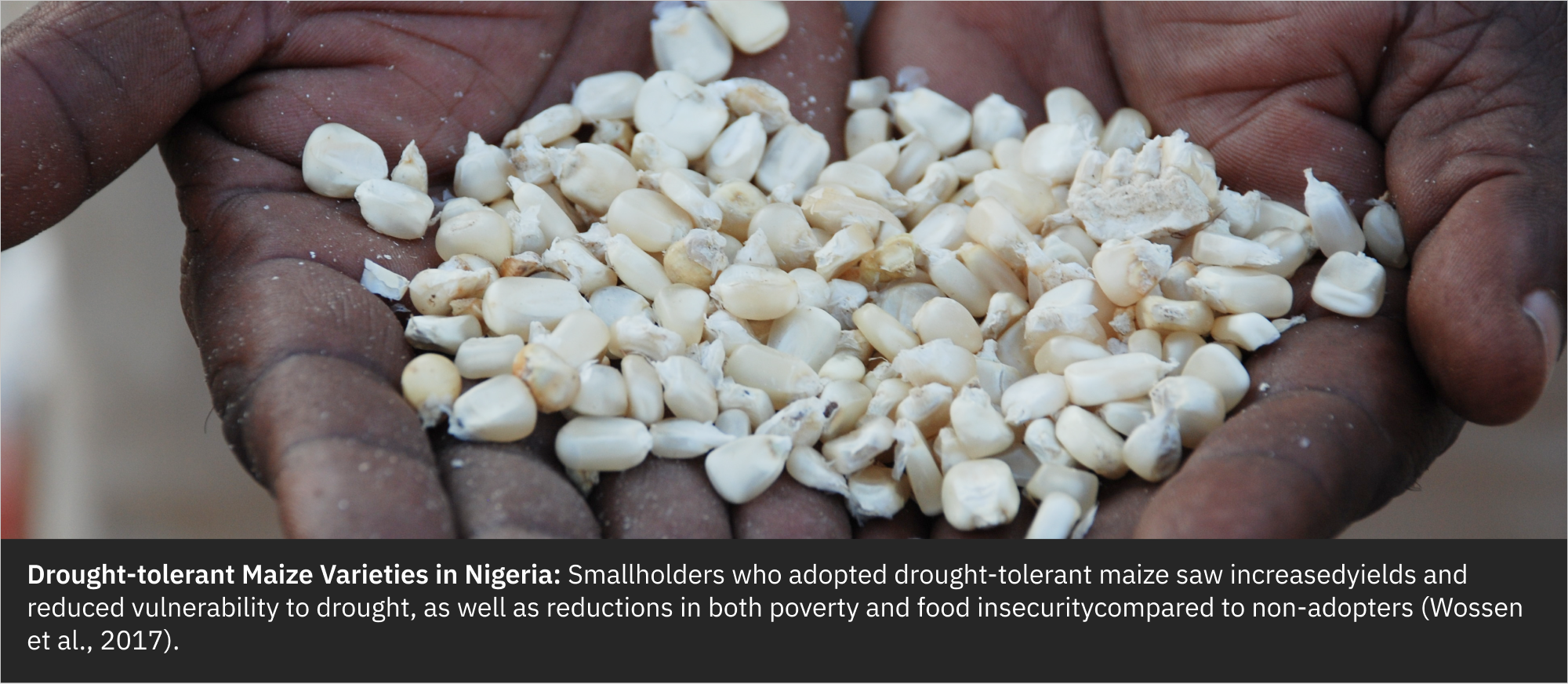Introduction
Despite the unprecedented challenges smallholder farmers in Africa are facing due to climate change, there are many options available to help them adapt (Loboguerrero et al., 2019).

Image credit: ©2012CIAT/NeilPalmer
Suitability of each adaptation option will depend on the farming system, climate, soils and social context
Adaptation options run the gamut from farm management practices (e.g., which crops and varieties to plant, which inputs to use, how to prepare the land, or even how the harvest is stored) to services that farmers can access (e.g., climate information, extension, insurance, credit and loans). However, the suitability of each adaptation option will depend on the farming system, climate, soils and social context (Deressa et al., 2009).

Map 1 Number of adaptation options (out of the 28 modeled) that will be suitable in 2030 under RCP 8.5.
Across arable parts of Africa, all places had 8 or more options projected to be suitable in the future
Map 1 shows the number of adaptation options (out of the 28 modeled) that will be suitable in 2030 under a high-emissions climate change scenario*. Across arable parts of Africa, all places had 8 or more options projected to be suitable in the future, while others had more than 20. Some options were found to be broadly suitable across many different farming contexts.

Image credits: M. Tall/CCAFS (left), T. Samson/CIMMYT (right)
Many of these options are practices that improve soil health
Many of these options are practices that improve soil health, including the addition of soil nutrients from organic and inorganic sources, crop rotation and fallowing, which have been identified as a key component to achieving food security in Africa (Sánchez, 2010).
For example, the addition of organic and inorganic inputs was projected to increase crop yields and improve soil conditions in 91% and 88% of arable land respectively, across all farming systems. Rotating maize with other crops such as legumes was also broadly suitable for increasing maize yields in 2030 and was found to be suitable in 98% of arable areas in sub-Saharan Africa.

Image credit: A. Wangalachi/CIMMYT
Although some practices may show low suitability because they do not generally increase crop yields by at least 15%, they may have other benefits
Other adaptation options have narrower niches, or agroecological conditions where they are suitable. For example, reducing soil tillage by using direct seeding methods and other techniques, when practiced alone, generally does not significantly increase maize yields and may even reduce them, particularly in humid areas (Pittelkow et al., 2015).
In our analysis, we found reduced tillage alone to be broadly unsuitable for increasing maize yields in 2030. Similarly, the agroforestry practice of alley cropping, where maize or other crops are planted between rows (or alleys) of trees, was found to be suitable on less than 10% of arable land in sub-Saharan Africa. Although some practices may show low suitability because they do not generally increase crop yields by at least 15%, they may have other benefits such as improving soil health, enabling farmers to diversify their income streams, or capturing carbon. These can reduce their vulnerability or exposure to climate change hazards.

Image credits: Neil Palmer/CIAT(left) IITA (right)
Agroecological suitability should be combined with adaptive capacity analysis
The agroecological suitability of a technology is only the first step in adapting food systems to climate change. The adoption of these technologies by smallholder farmers depends on a diverse array of social factors. Access to information, availability of resources such as wealth or credit, and security of land tenure may be key enabling factors in Africa (Arslan et al., 2020). Thus, agroecological suitability should be combined with adaptive capacity analysis to determine the best-bet adaptation options for a given context.
Evidence shows that all farming systems in sub-Saharan Africa are likely to have many suitable adaptation options now and under future climate change scenarios. While the adaptation options modeled are based on studies of many locations across a range of contexts in Africa, there may be many more that are suitable for which we do not currently have data.